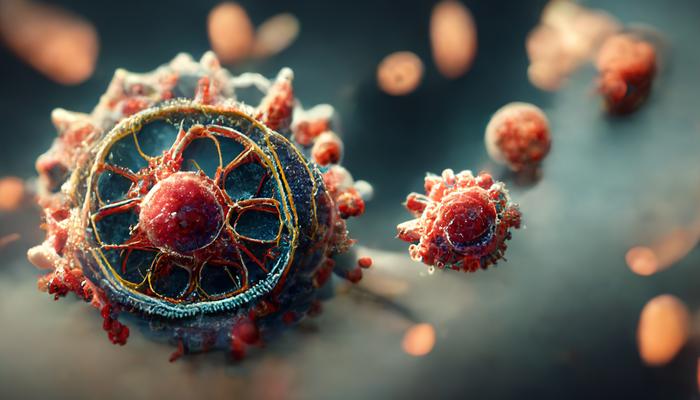Researchers have shed light on how a highly infectious virus, that has recently transferred from animals to people, is able to enter human cells.

Credit: Catalin
Researchers have shed light on how a highly infectious virus, that has recently transferred from animals to people, is able to enter human cells.
The University of Queensland’s Dr Ariel Isaacs and Dr Yu Shang Low have uncovered the structure of the fusion protein of Langya virus, which was discovered in people in eastern China in August 2022.
Dr Isaacs said the virus caused fever and severe respiratory symptoms and was from the same class of viruses as the deadly Nipah and Hendra viruses.
“We’re at an important juncture with viruses from the Henipavirus genus, as we can expect more spill over events from animals to people,” Dr Isaacs said.
“It’s important we understand the inner workings of these emerging viruses, which is where our work comes in.”
The team used UQ’s molecular clamp technology to hold the fusion protein of the Langya virus in place to uncover the atomic structure using cryogenic electron microscopy at UQ’s Centre for Microscopy & Microanalysis.
“Understanding the structure and how it enters cells is a critical step towards developing vaccines and treatments to combat Henipavirus infections,” Dr Isaacs said.
“There are currently no treatments or vaccines for them, and they have the potential to cause a widespread outbreak.”
Associate Professor Daniel Watterson, a senior researcher on the project, said they also saw that the Langya virus fusion protein structure is similar to the deadly Hendra virus, which first emerged in southeast Queensland in 1994.
“These are viruses that can cause severe disease and have the potential to get out of control if we’re not properly prepared,” Dr Watterson said.
“We saw with COVID-19 how unprepared the world was for a widespread viral outbreak and we want to be better equipped for the next outbreak.”
The researchers will now work to develop broad-spectrum human vaccines and treatments for Henipaviruses, such as Langya, Nipah and Hendra.
The research is published in Nature Communications.
UQ acknowledges the support of the Coalition for Epidemic Preparedness Innovations, the Queensland and Australian governments and philanthropic partners.
Journal
Nature Communications
DOI
10.1038/s41467-023-39278-8
Article Title
Structure and antigenicity of divergent Henipavirus fusion glycoproteins
Article Publication Date
16-Jun-2023




